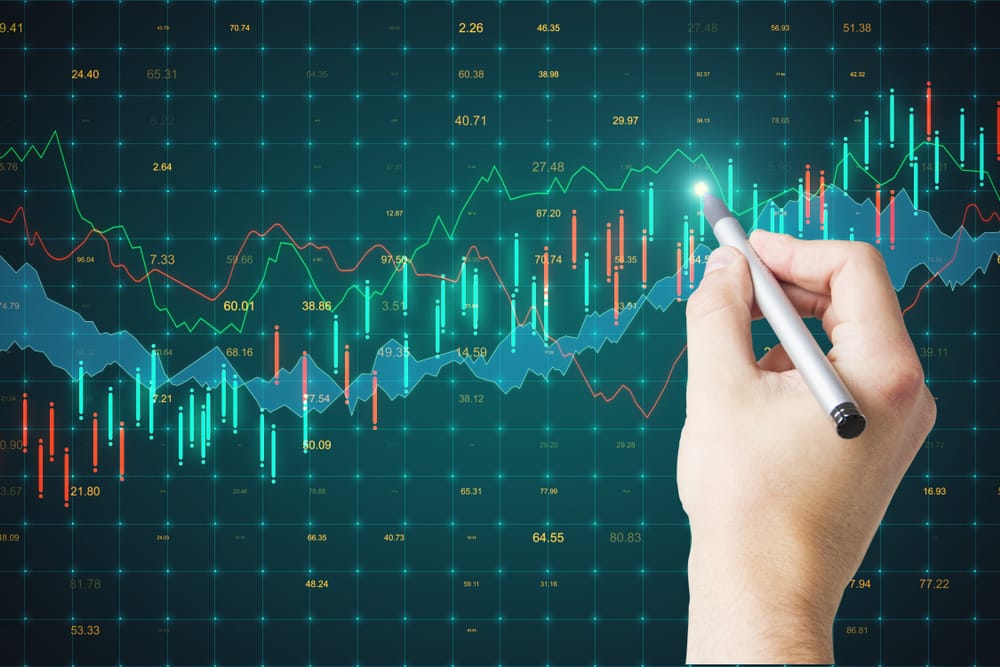Index of All Common Stock Prices for United States
This dataset tracks index of all common stock prices for united states over time.
Latest Value
106.48
Year-over-Year Change
11.73%
Date Range
1/1/1945 - 12/1/1968
Summary
The Index of All Common Stock Prices for United States measures the overall performance of the U.S. stock market. It is a key indicator of economic health and investor sentiment.
Analysis & Context
This economic indicator provides valuable insights into current market conditions and economic trends. The data is updated regularly by the Federal Reserve and represents one of the most reliable sources for economic analysis.
Understanding this metric helps economists, policymakers, and investors make informed decisions about economic conditions and future trends. The interactive chart above allows you to explore historical patterns and identify key trends over time.
About This Dataset
This index tracks the value of a hypothetical portfolio of all publicly traded U.S. common stocks, providing a broad measure of stock market activity. It is widely used by economists and policymakers to gauge domestic economic conditions and investor confidence.
Methodology
The index is calculated based on stock price data collected from major U.S. exchanges.
Historical Context
The stock market index is closely monitored by the Federal Reserve and other institutions for insights into economic trends and policy decisions.
Key Facts
- The index was first published in 1918.
- It covers over 4,000 U.S. common stocks.
- The index reached an all-time high in January 2022.
FAQs
Q: What does this economic trend measure?
A: The Index of All Common Stock Prices for United States measures the overall performance of the U.S. stock market by tracking the value of a hypothetical portfolio of all publicly traded U.S. common stocks.
Q: Why is this trend relevant for users or analysts?
A: This broad stock market index is a key indicator of economic health and investor sentiment, providing insights that are closely monitored by economists, policymakers, and market participants.
Q: How is this data collected or calculated?
A: The index is calculated based on stock price data collected from major U.S. exchanges.
Q: How is this trend used in economic policy?
A: The stock market index is closely tracked by the Federal Reserve and other institutions to gauge domestic economic conditions and inform policy decisions.
Q: Are there update delays or limitations?
A: The index is updated regularly, but there may be occasional delays in data reporting from the underlying sources.
Related News

S&P 500 hits record as U.S. producer prices fall
S&P 500 Reaches Record High as U.S. Producer Prices Decline The S&P 500 reaching a record high suggests a notable moment in market history, particularly as the U.S. Producer Price Index (PPI) shows a downward trend. The link between the stock markets and producer prices demonstrates how interconnected these financial indicators can be. Falling PPI numbers might seem positive, yet they can signal underlying market changes. These shifts invite investors to recalibrate their approaches in response

U.S. S&P 500 Represents New Market Normal, Says BofA Analysis
S&P 500 Unveils 'New Normal' in U.S. Equity Markets The S&P 500evident in recent performance trends, which is a major index in the world of U.S. stocks, may now be signaling what Bank of America calls a 'new normal' in U.S. equity markets. Defining the 'New Normal' in the S&P 500 The 'new normal' represents a transformative phase where traditional valuation norms are shifting. Amidst high points and sustained growth in the S&P 500to be heavily influenced by changing valuation metrics, such a

U.S. Stocks Hit Records; Gold Surges, Bitcoin Declines
U.S. Stock Market Soars Amid Treasury Yield Concerns Despite ongoing global uncertainties, the U.S. stock market has defied expectations, setting unprecedented records this year. The surge of the stock indices reflects the market's buoyancy despite economic fluctuations. Major indicators like the Dow Jones, S&P 500, and Nasdaq have all reached new highs, signifying the resilience of equities in the current financial landscape. Meanwhile, gold prices have surged, reinforcing its status as a safe

S&P 500 Target Increases Amid Ongoing AI Growth in the US
AI Growth Drives S&P 500 Target Increases AI technology is playing a significant role in propelling S&P 500 target increases, reshaping the United States stock exchange. As Wall Street analysts tune their investment strategies in response to these changes, the S&P 500's rise serves as a mirror reflecting wider economic trends. The increasing targets have brought a new focus to stock market predictions and AI investment, altering the ways both investors and analysts approach the financial landsc

U.S. Stock Futures Stagnant Despite Positive Jobless Claims and GDP
Why US Stock Futures Remain Stagnant Despite Positive Economic Indicators The current investment landscape is puzzling for many as US stock futures struggle to show a definite trend despite favorable economic signals. These signals, such as jobless claims and Q2 GDP figures, suggest a healthy economy. Given the roles of the stock market and the Federal Reserve's decisions on rate hikes, it is surprising to witness this stagnation. Inflation trends and the Fed's signals about future policies pla

U.S. Home Sales Decline In August Due To High Prices
August 2023 U.S. Home Sales Decline Amid Rising Mortgage Rates and High Prices In August 2023, U.S. home sales experienced a notable decline, highlighting a distressing trend in the housing market. Homeownership is more costly these days. High home prices and soaring 30 year mortgage rates, combined with limited housing inventory, pose significant challenges for potential buyers and cast a shadow on economic recovery efforts. Many potential homebuyers find themselves increasingly priced out of
Related Trends
Consumer Price Index for All Urban Consumers: All Items in U.S. City Average
CPIAUCNS
Capacity Utilization: Total Index
TCU
Commercial and Industrial Loans, All Commercial Banks
TOTCI
Share of Foreign Born in Home Owners Loan Corporation (HOLC) Neighborhood A
RLMSHFBHOLCNA
Home Ownership Rate in Home Owners Loan Corporation (HOLC) Neighborhood C
RLMSHHORHOLCNC
Share of Foreign Born in Home Owners Loan Corporation (HOLC) Neighborhood C
RLMSHFBHOLCNC
Citation
U.S. Federal Reserve, Index of All Common Stock Prices for United States (M1125BUSM347NNBR), retrieved from FRED.